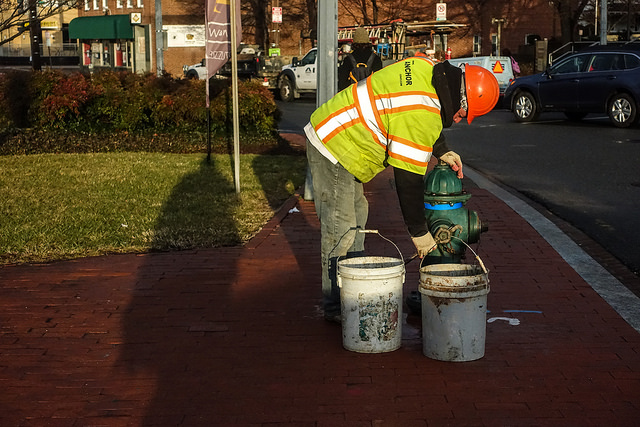 A coffee packaging machine gets jammed, and the employee, instead of shutting the machine down, reaches under the machine guards to unjam the machine, which starts up and amputates his finger tip. OSHA issues a $4,988 serious citation against the employer, Berardi’s Fresh Roast. But wait, says Berardi’s. The employee admitted he circumvented the guards, so isn’t this “unavoidable employee misconduct” that would exempt me from a citation?
A coffee packaging machine gets jammed, and the employee, instead of shutting the machine down, reaches under the machine guards to unjam the machine, which starts up and amputates his finger tip. OSHA issues a $4,988 serious citation against the employer, Berardi’s Fresh Roast. But wait, says Berardi’s. The employee admitted he circumvented the guards, so isn’t this “unavoidable employee misconduct” that would exempt me from a citation?
“No,” says the Occupational Safety and Health Review Commission, and for good reason.
Employee misconduct is a excuse frequently cited by employers in order to avoid an OSHA citation. “The employee broke the rule,” the employer pleads. “He was trained, he was instructed, but he persisted in breaking the rules. Nothing I could do about it.”
Well not so fast. Legal decisions, worker experience and common sense severely limit employers’ ability to successfully blame the worker for his or her own injury.
Background
In order to succeed with a defense of “unavoidable employee misconduct,” an employer has to satisfy four conditions. The employer had to have:
(1) established work rules designed to prevent the violation,
(2) adequately communicated those rules to its employees,
(3) taken steps to discover violations, and
(4) effectively enforced the rules when violations have been discovered
In this case, “Secretary of Labor vs. Berardi’s Fresh Roast,” the employee admitted that he reached under the machine guard to unjam the machine. The employee testified that he had been trained to do this by a senior employee, that the machine jammed frequently, and that the employees reached under the guard often; it was not an isolated event.
OSHRC found that none of the conditions for “unavoidable employee misconduct” had been satisfied. There were no work rules and nothing had been communicated to the employees. The manufacturer’s manual warned against circumventing the guards, but the manual had never been given to the employees. There was no health and safety program, and although the employer was on the floor daily, there was no evidence of any inspections, warnings or discipline for going around the guards.
In order to successfully defend a citation, OSHA also has to prove the the employer had knowledge, or at least “constructive knowledge” of the violation. “Constructive knowledge” means that even if OSHA can’t prove that the employer actually knew about the unsafe condition, OSHA can prove “constructive knowledge” if the employer could have known of the hazardous condition with the exercise of “reasonable diligence.” “Reasonable diligence” includes the employer’s “obligation to inspect the work area, to anticipate hazards to which employees may be exposed, and to take measures to prevent the occurrence.”
The record showed that the employer was on the floor every day, all year around, and the employees admitted that they had been circumventing the guards for many years. OSHRC therefore found that the employer “had constructive knowledge of the violative condition.”
Blame the Worker
What we have apparently have here is an all-too-common situation where the best way to meet production quotas is to circumvent machine guarding (as in this case), or sometimes to avoid lockout-tagout procedures. Employers often know about these “violations,” and either ignore the violations, allow them to go forward with a “wink and a nod,” or sometimes actually encourage encourage employees to bypass safety procedures. Then, if someone gets hurt, they’re shocked, SHOCKED that employees were violating safety rules.
We have discussed problems with blaming the worker (or “human error“) for workplace incidents. (BP even initially blamed workers for the catastrophic 2005 Texas City refinery explosion that killed 15 workers.) Basically, just ending an investigation with findings of worker misconduct or worker carelessness is not only usually wrong, but doesn’t help prevent future incidents. If you really want to prevent future similar accidents, you need to go further and look for the root causes. The simplest way to do that is to keep asking “why?” Someone used the wrong equipment, or pressed the wrong button, or went around the machine guards, or didn’t lock out the machine. Why? Were they under intense pressure to increase productivity? Were they told to do it by a supervisor who had a quota to fill? Were they not well trained for the job? Were they tired from too much overtime?
And finally, it is illegal for employers to discipline workers for not following the rules, if the rules are generally and knowingly not followed, and the injured worker is only disciplined because this time someone happened to get injured.
The lesson here is that blaming the worker does not make the workplace safer. If you stop at “worker misconduct,” the obvious solution is to discipline or fire the worker. But if you don’t resolve the underlying root causes, you don’t solve the problem. If the production pressures are still there, if there’s still no training, if managers continue to encourage workers to take short cuts, the same thing will happen, over and over again.
HatTip on this to Eric Conn (@oshaguy), an employer attorney, and Bryan Haywood (@safeteng) for bringing this case to my attention. Eric and I had a short debate about this case May 5 on Twitter.